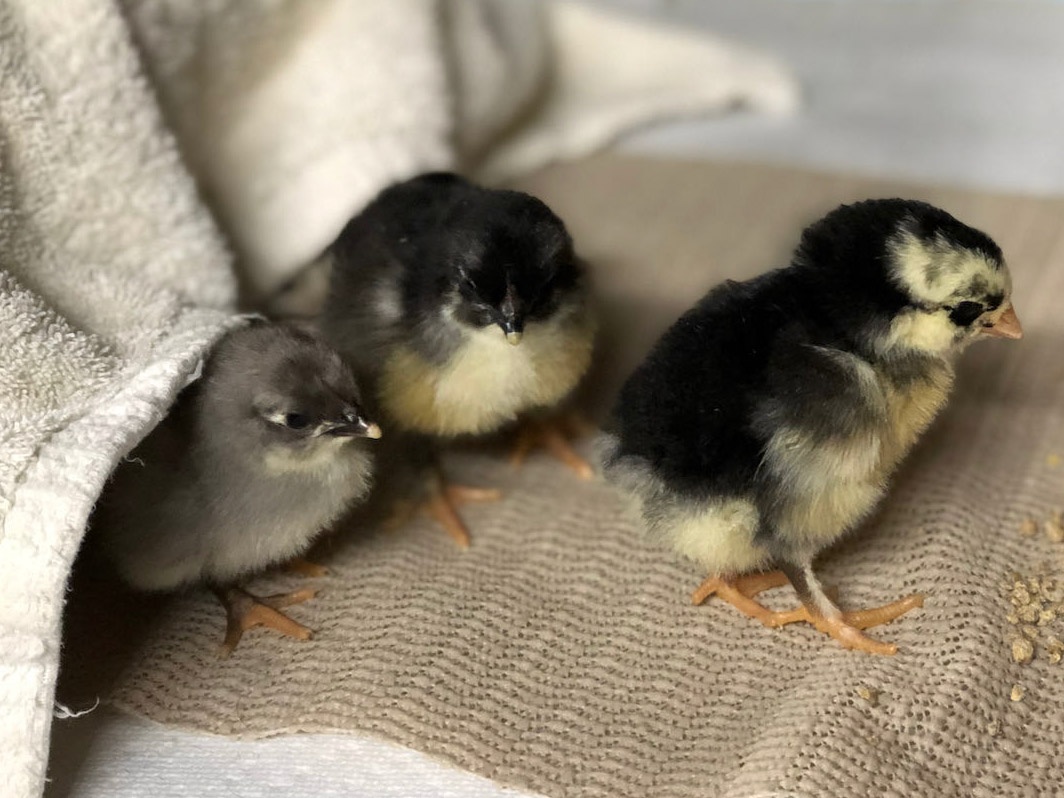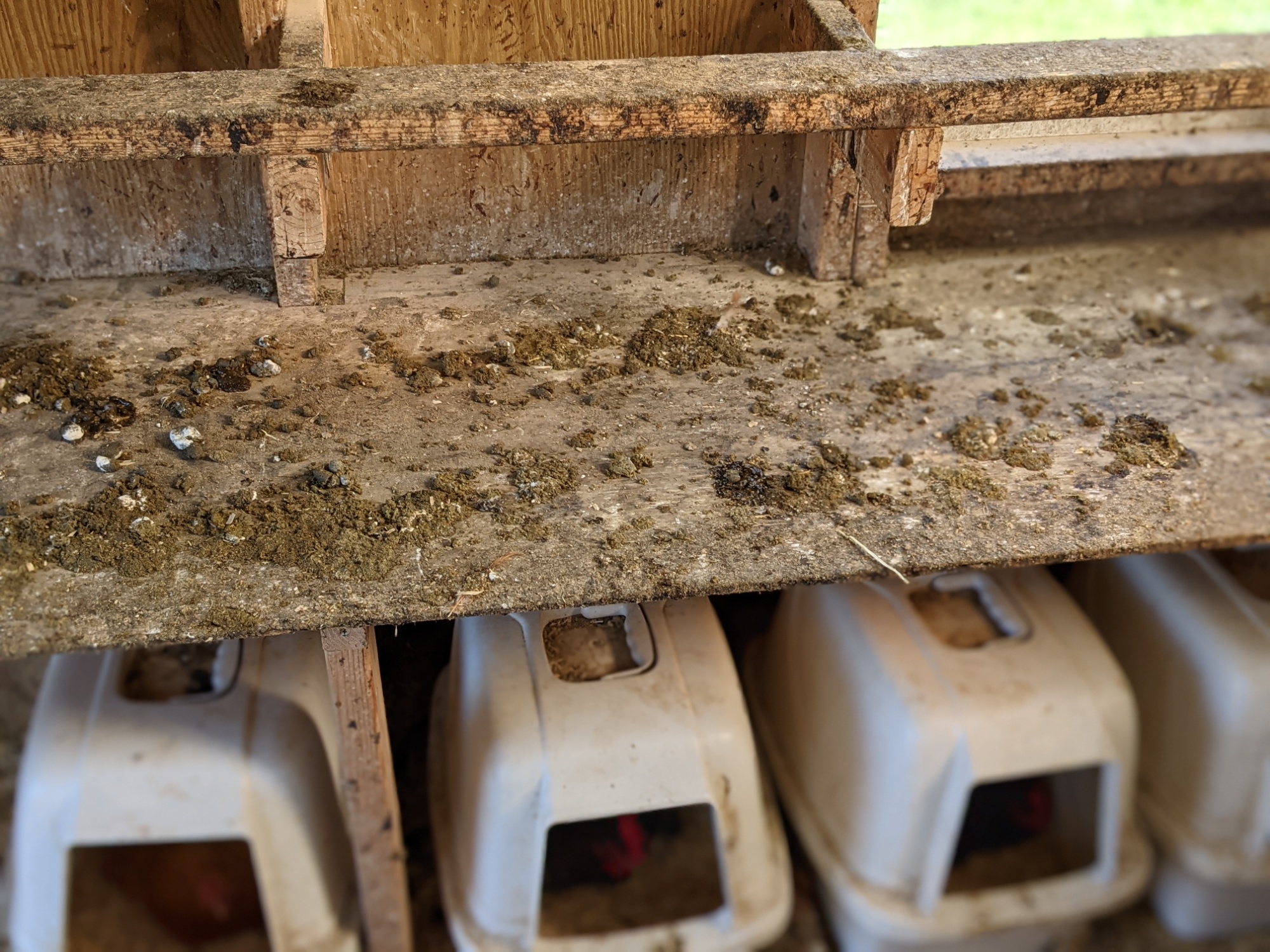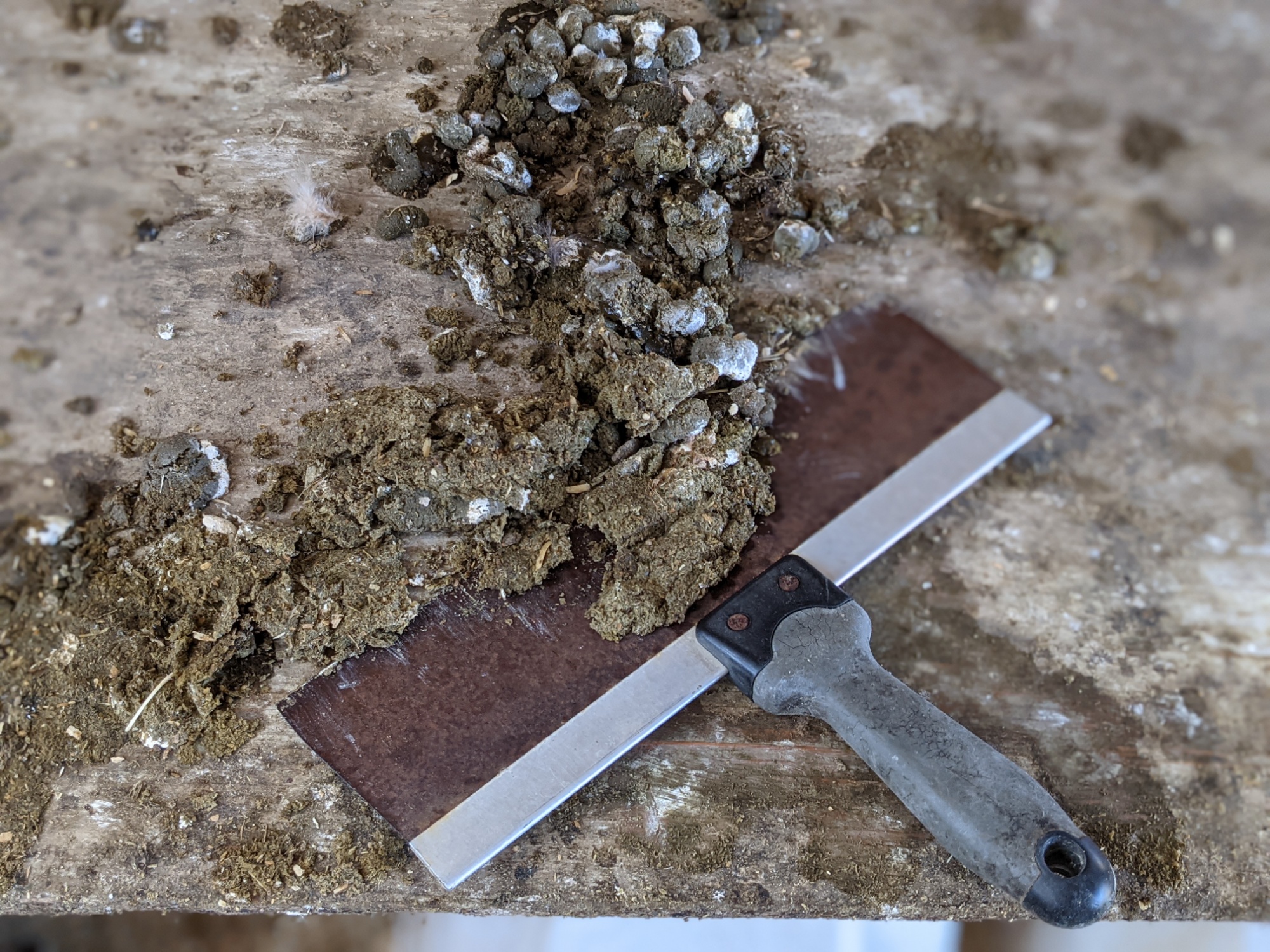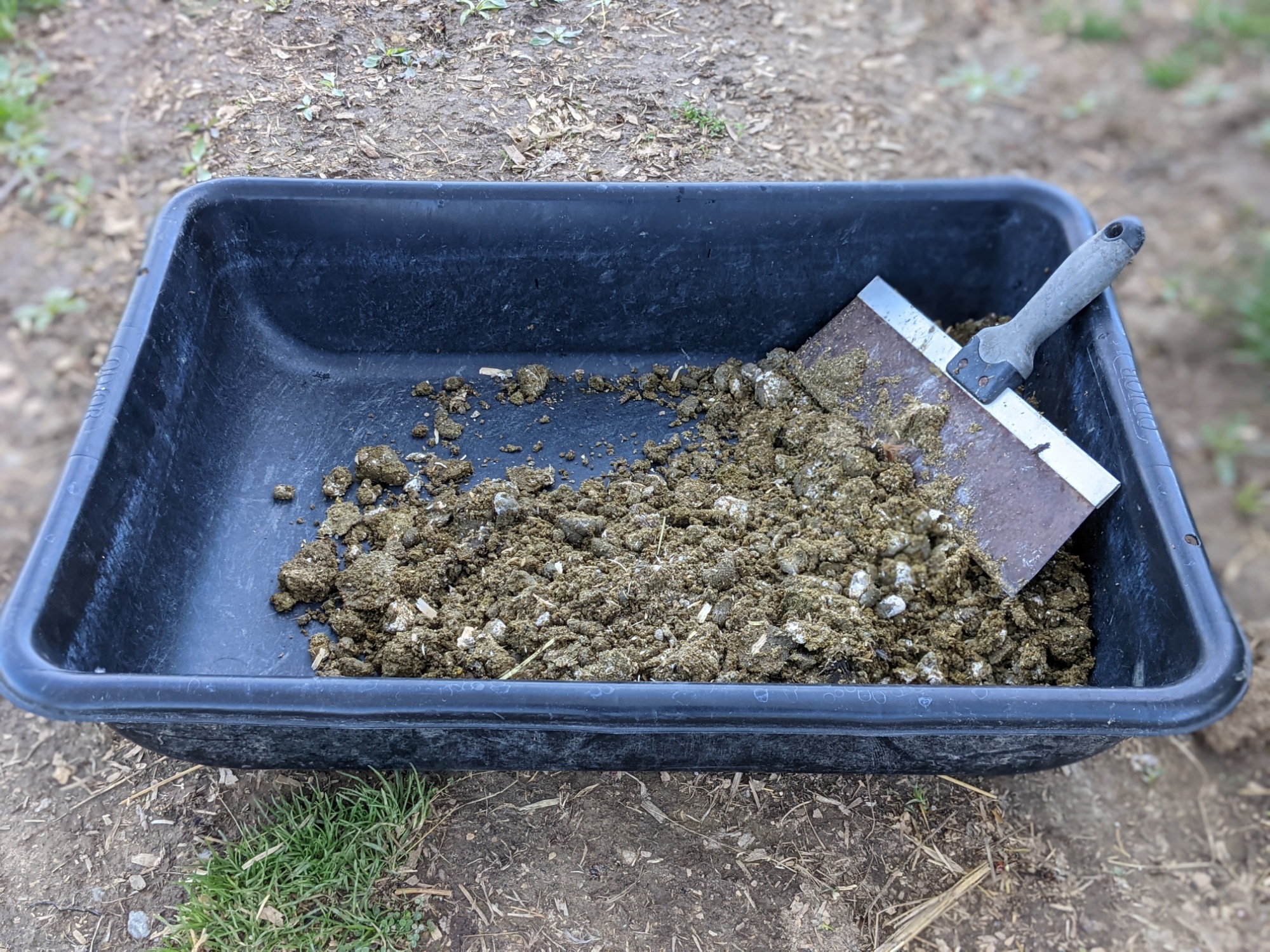
Spring is chick season, and there are undoubtedly many people who are new to chickenkeeping acquiring their first chicks. It’s an exciting experience, but those who have gone before – if you will – have tips and “lessons learned” to share. One tip I’d like to share is about the importance of the poop board. Find out why it makes chicken raising so much more manageable!
When we got our first chicks, yea those many years ago (lol), we weren’t really very well-prepared. Honestly, we saw some fluffballs at a (now-defunct) local farm store and decided that we’d jump into poultry raising. It wasn’t completely spontaneous – we’d already decided we wanted chickens and had begun researching breeds – but being in close proximity to the tiny creatures admittedly sped up our timeline. If not then, when, right?

Once past the excitement of getting that box of cheeping fluffballs home, we soon realized that we would need a coop for them, sooner than we imagined. At the time, we were still working corporate jobs, which meant we had little spare time for a project like coop building. Back then, we also knew little about the key elements of a proper coop, anyway, so we decided to buy a fairly expensive prebuilt shed and convert it into a chicken coop. Sure, that’s one way to approach it, but knowing what I know now, I would definitely build my own, rather than try to convert a structure not purpose-built for chickens.
During our conversion journey, we knew we’d have to deal with the inevitable: poop. And lots of it, as the number of chickens grew (chicken math is real!). One of the coop designs we happened upon during our research showed a “poop board” – essentially, a shelf beneath the roosts that would catch the droppings and allow them to be removed from the coop. Daily.

Wondering why daily cleanup is important? Chicken droppings are wet, creating humidity and potentially high levels of ammonia in the coop. I don’t want my girls to be breathing that, or to be smearing poop (from their feet) on eggs that I may eat or incubate, so cleanliness is key.
With a poop board, all I have to do is take a putty knife (a sturdy metal scraper) and scoop the droppings off the board into a receptacle to transport it elsewhere. Afterward, a high-pressure rinse of the tub and scraper leaves them clean and ready for the next morning’s “doody” duty.

After using different types of receptacles, a small mixing tub has proven to be the best: lightweight enough to be easily handled, but tough enough to last. A cheap plastic cat litter pan and a plastic bussing tub, previous iterations of the poop repository, both cracked after being left out in the elements…and nobody wants a pan full of chicken poop to give up during use!

All joking aside, removing poop is serious business. It’s difficult in the winter, when (even here in a subtropical climate), it freezes to the board and must be chipped out; during the rest of the year, though, the indispensable poop board helps keep the coop flooring cleaner and the eggs ready for eating or incubation. This method is also effective for other roosting fowl, like Muscovy ducks, though their droppings are much wetter – it’s more like scraping thin drywall mud than [a chicken’s] modeling clay.
If you’re getting chicks this spring, think about implementing a poop board to keep your coop clean and your birds happy!

Comments are closed.